springboot整合Quartz(1)
创始人
2024-05-30 16:16:46
0次
文章目录
- 前言
- 一 理论基础
- 1.1 小顶堆(平衡二叉堆)
- 1.2 小顶堆的存取方式
- 1.2.1 插入顶堆元素
- 1.2.2 删除顶堆元素
- 1.3 任务与小顶堆
- 1.3 时间轮算法
- 二 Spring Boot集成JDK定时任务
- 2.1 TaskQueue源码分析
- 2.2 TimerThread源码分析
- 2.2.1 Timer构造器
- 2.2.2 Timer类中的执行方法
- 2.2.3 TimerTask源码分析
- 2.4 ScheduledExecutorService源码分析
- 2.4.1 ScheduledThreadPoolExecutor构造器
- 2.4.2 ScheduledExecutorService接口
- 2.4.3 DelayedWorkQueue【部分】
- 2.4.4 ScheduledFutureTask【部分】
- 2.4.5 getDelay&compareTo
- 2.6 案例
- 2.7 总结
前言
- 本来准备简单入门一下,但是看到网上的资源并不是很完整,所以,自己动手学习总结了一下!
一 理论基础

1.1 小顶堆(平衡二叉堆)
- 堆是一种特殊的树,满足下面的条件:
- 堆是一颗完全二叉树
- 堆中某个节点的值总是不大于(或不小于)其父节点的值
- 其中,根节点最大的堆叫做大顶堆,根节点最小的堆叫做小顶堆
- 满二叉树:所有层都达到最大结点数1、2、4、8
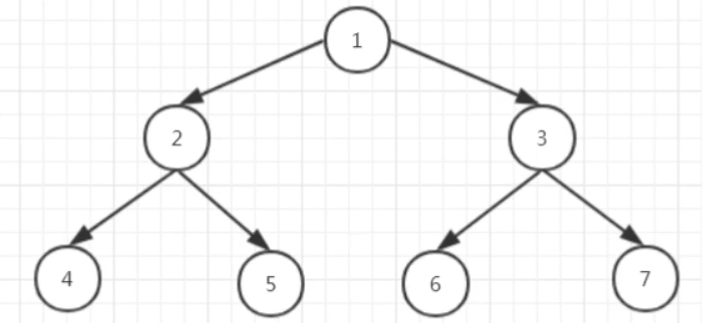
- 完全二叉树:除了最后一层外其他层都达到最大结点数,且最后一层结点都靠左排列1、2、4、2
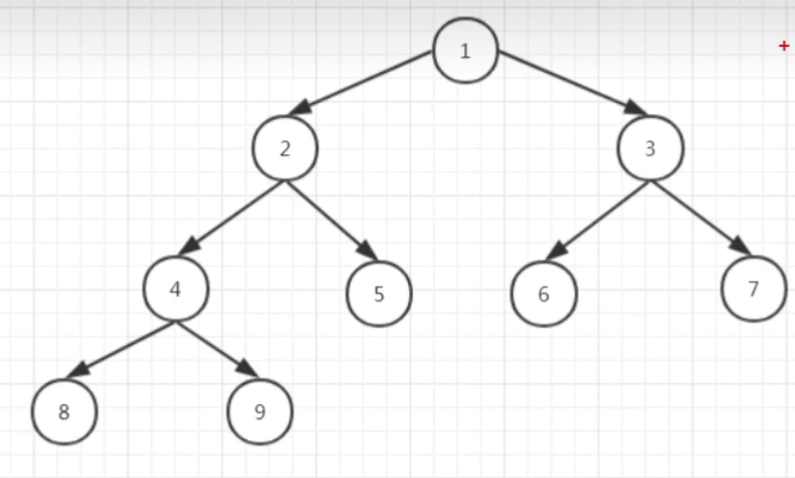
- 完全二叉树最适合用数组做存储,因为它的节点都是紧凌的,且只有最后一层节点数不满

- 下标000的位置不存在元素的解释:这是因为这样存储我们可以很方便地找到父节点:下标/2下标/2下标/2,比如,444的父节点即4/2=24/2=24/2=2;555的父节点即5/2=25/2=25/2=2
1.2 小顶堆的存取方式
- 数组存储结构的优势:采用数组,堆的结点父子关系明确,可以简单快捷地找到指定结点的父节点或子节点【方便后面的堆化】
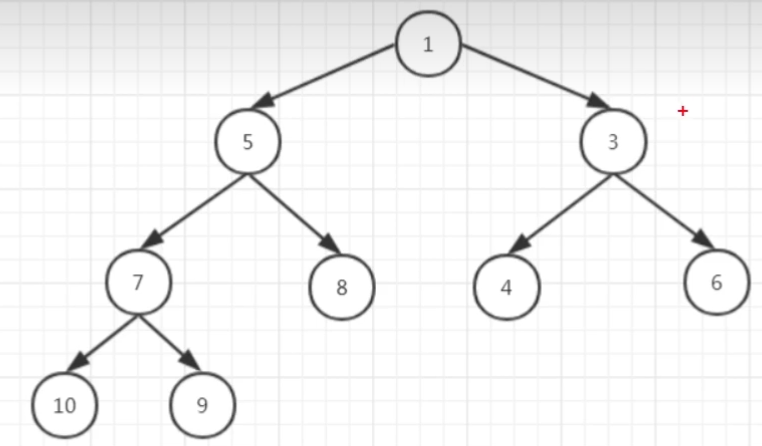

1.2.1 插入顶堆元素
- 插入尾部,然后上浮
- 往堆中插入一个元素后,需要继续满足堆的两个特性,即:
- 堆是一颗完全二叉树
- 堆中某个节点的值总是不大于(或不小于)其父节点的值
- 为了满足条件1条件1条件1,要把元素插入到最后一层最后一个节点往后一位的位置,但是插入之后可能不再满足条件2条件2条件2了,所以这时候需要堆化
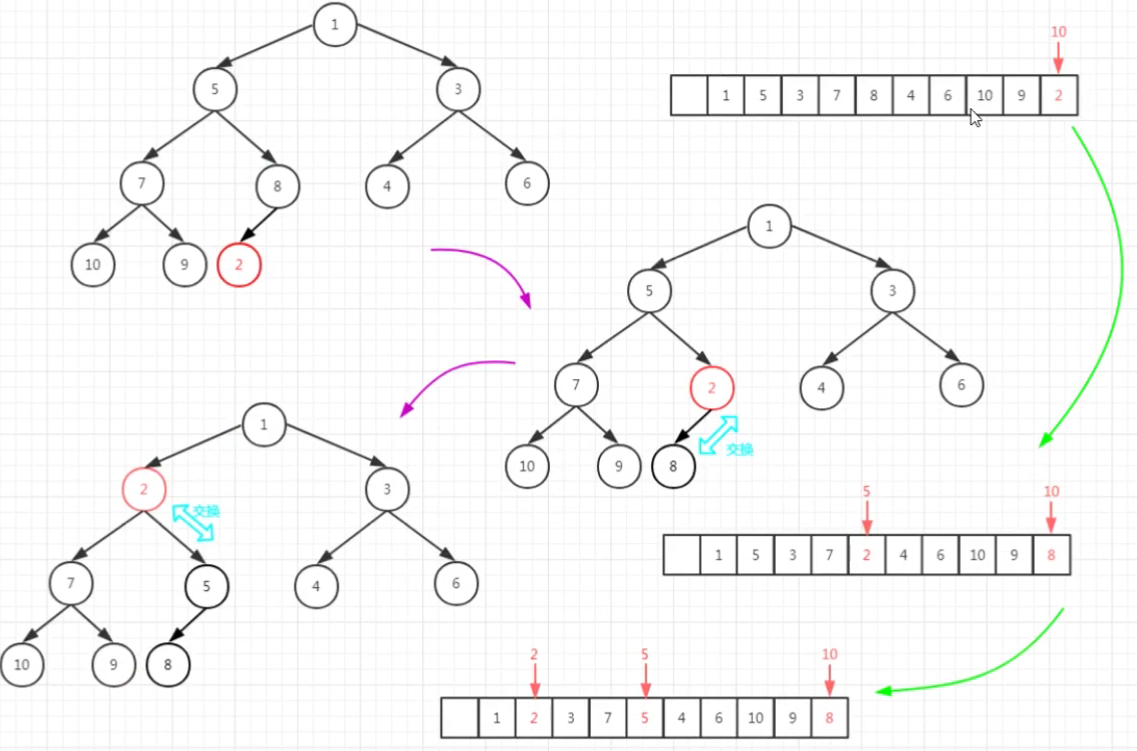
1.2.2 删除顶堆元素
- 将尾部元素放到堆顶(最大的元素),然后下沉
- 小顶堆中堆顶存储的是最小的元素。
- 删除了堆顶元素后,要使得还满足堆的两个特性,首先,我们可以把最后一个元素移到根节点的位置,这时候就满足条件1条件1条件1,之后就是使它满足条件2条件2条件2,就需要堆化了
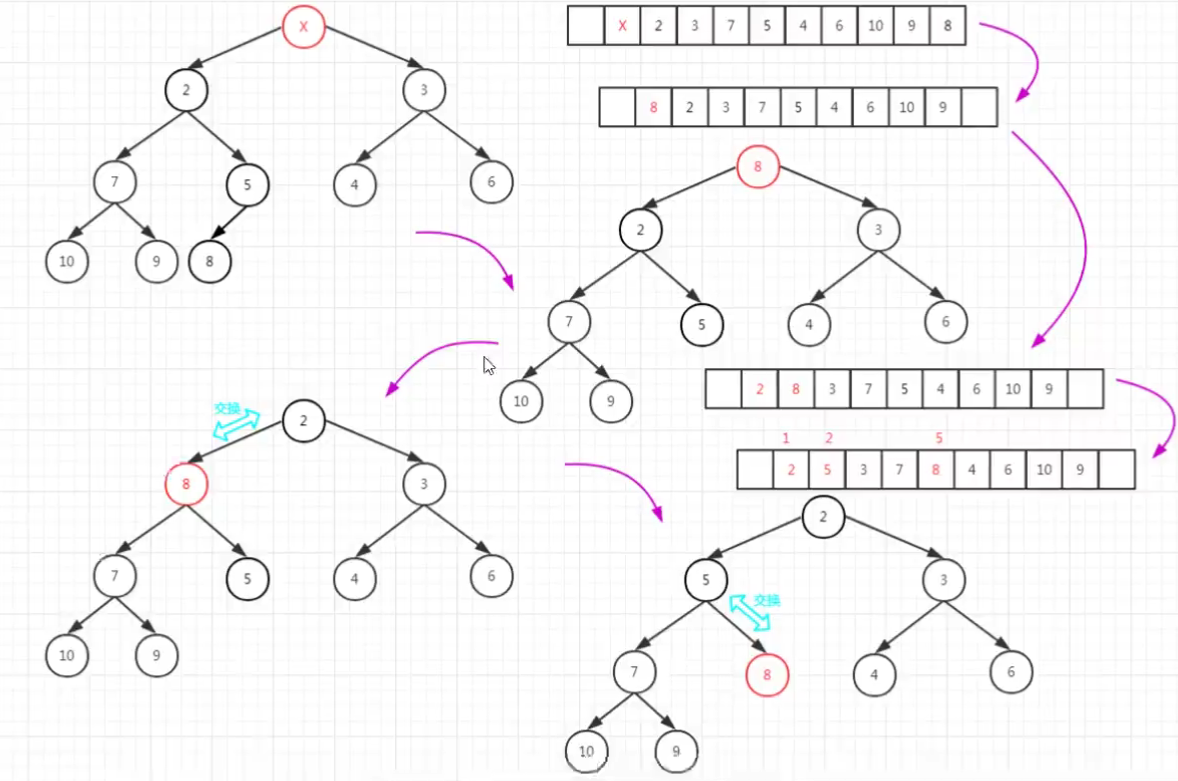
1.3 任务与小顶堆
- 在java中每个任务都是放在小顶堆的结点中的,结点的值即【任务的到期时间】,所以会首先取出堆顶的元素。
1.3 时间轮算法
- 顶堆结构存在的缺陷:
- 当数据量过大时,下沉或上浮操作降低性能,损耗时间
- 结点的值比对的过程,存在冗余比对操作
- 当时间维度较大时,堆的结构复杂

- 时间轮记录的缺陷:因为轮中通常设计12个刻度,导致无法区分1121~121 12与132413~2413 24的时间段,所以使用round时间轮一个round变量初始化为1,当第一次遍历时间点时,时间段为1121~121 12,将round减1,当时间段为122412~2412 24遍历到round值为0的时间点时,执行任务。
- round时间轮的缺陷:需要遍历所有任务,效率低下。经过改进之后,使用分层时间轮分层时间轮分层时间轮
- 分层时间轮:使用多个不同时间维度的轮
二 Spring Boot集成JDK定时任务
- Timer是JDK提供的java.util包中的一个定时器工具,其内部维护着TimerThread和TaskQueue两个对象,当程序启动后,会在主线程之外另起一个线程来执行计划任务。
- 在Timer定时任务中,主要用两个类Timer和TimerTask,可以被看成是定时器和可以被定时器重复执行的任务
- 在开发时,只需要继承TimerTask类重写 run()方法,实现业务逻辑,然后通过Timer设置时间,执行TimerTask任务即可。
import java.time.LocalDateTime;
import java.util.Timer;
import java.util.TimerTask;/*** @author 缘友一世* date 2023/3/7-13:39*/public class MyTriggerTask {public static void main(String[] args) {//TimerTask 定时器任务MyTask myTask = new MyTask();//定时器Timer timer = new Timer();//执行方法:延迟3秒后第一次执行,以后每1秒执行1次timer.schedule(myTask,3000,1000);}static class MyTask extends TimerTask{@Overridepublic void run() {System.out.println("MyTask正在执行的时间"+LocalDateTime.now().toLocalTime());}}
}
- 进入Timer源码进行分析,我们首先可以看到两个属性
//定时器任务队列
private final TaskQueue queue = new TaskQueue();
//定时器线程
private final TimerThread thread = new TimerThread(queue);
- TaskQueue类表示计时任务队列,用来存放TimerTask和管理任务队列。核心是封装一个以小顶堆为数据结构的优先级队列,该队列按照nextExecutionTime的大小进行排序,其值越小,那么在堆中的位置就越靠近堆顶,越有可能被执行。
- nextExecutionTime:TimerTask中属性,表示下一次开始执行的时间。
2.1 TaskQueue源码分析
- 以下是TaskQueue的源码实现,深入探究列表的增、删、改、查和重新排列的逻辑。
class TaskQueue {//TimerTask数组,默认为128个private TimerTask[] queue = new TimerTask[128];//表示优先级队列中的任务数private int size = 0;/*** Returns the number of tasks currently on the queue.*/int size() {return size;}//添加一个新的任务到优先队列中void add(TimerTask task) {// 如果队列已满,则进行扩容if (size + 1 == queue.length)queue = Arrays.copyOf(queue, 2*queue.length);//然后将任务放入队列queue[++size] = task;//队列排序方法,向上提升新任务在队列中的位置fixUp(size);}//返回优先队列中的根节点【头部任务】TimerTask getMin() {return queue[1];}//返回第i个任务TimerTask get(int i) {return queue[i];}//从优先队列中移除头部任务,然后从根节点向下"降级"void removeMin() {queue[1] = queue[size];queue[size--] = null; // Drop extra reference to prevent memory leakfixDown(1);}//快速删除第i个任务,不考虑保持堆不变,不用调整队列void quickRemove(int i) {assert i <= size;queue[i] = queue[size];queue[size--] = null; // Drop extra ref to prevent memory leak}/*** Sets the nextExecutionTime associated with the head task to the* specified value, and adjusts priority queue accordingly.*///设置与头部任务关联的nextExecutionTime为指定值,并调整优先队列void rescheduleMin(long newTime) {queue[1].nextExecutionTime = newTime;fixDown(1);}//判断当前队列是否为空boolean isEmpty() {return size==0;}//从优先队列中移除所有元素void clear() {// Null out task references to prevent memory leakfor (int i=1; i<=size; i++)queue[i] = null;size = 0;}//将queue[k]向上‘提升’,直到queue[k]的nextExecutionTime大于或等于父级的执行时间private void fixUp(int k) {while (k > 1) {int j = k >> 1;if (queue[j].nextExecutionTime <= queue[k].nextExecutionTime)break;TimerTask tmp = queue[j]; queue[j] = queue[k]; queue[k] = tmp;k = j;}}//将queue[k]向下‘降级’,直到queue[k]的nextExecutionTime小于或等于子级的执行时间private void fixDown(int k) {int j;while ((j = k << 1) <= size && j > 0) {if (j < size &&queue[j].nextExecutionTime > queue[j+1].nextExecutionTime)j++; // j indexes smallest kidif (queue[k].nextExecutionTime <= queue[j].nextExecutionTime)break;TimerTask tmp = queue[j]; queue[j] = queue[k]; queue[k] = tmp;k = j;}}//将整个堆重新排列,并将最小元素排在堆顶void heapify() {for (int i = size/2; i >= 1; i--)fixDown(i);}
}
2.2 TimerThread源码分析
- TimerThread类是用于执行TimeTask的线程,不仅可以启动定时任务并重复执行,而且还可以从队列中删除取消的任务及只允许执行一次的非重复任务。
- TimerThread的实现逻辑就是通过一个死循环来判断当前队列中最小的nextExecutionTime任务是否可运行。
class TimerThread extends Thread {//用于标识当前Timer实例中是否存在任务需要调度boolean newTasksMayBeScheduled = true;//定时任务队列,避免被循环依赖private TaskQueue queue;//带参数构造器TimerThread(TaskQueue queue) {this.queue = queue;}public void run() {try {//主循环调用mainLoop();} finally { //如果线程被杀死或者退出循环,则清空任务队列// Someone killed this Thread, behave as if Timer cancelledsynchronized(queue) {//设置是否存在任务需要调度标识newTasksMayBeScheduled为falsenewTasksMayBeScheduled = false;queue.clear(); // Eliminate obsolete references}}}//主定时器循环private void mainLoop() {while (true) {try {TimerTask task;boolean taskFired;//设置同步锁,锁定当前queue对象synchronized(queue) {// 判断当前队列是否为空,如果为空且没有新的调度任务,则线程进入等待状态while (queue.isEmpty() && newTasksMayBeScheduled)queue.wait();if (queue.isEmpty())break; // 如果队列为空,则跳出死循环//当前时间 执行时间 long currentTime, executionTime;//获取任务队列中的头部任务(小顶堆的根节点)task = queue.getMin();//设置同步锁锁定当前执行的任务synchronized(task.lock) {//他们当前任务,如果危险组状态,则从队列中移除if (task.state == TimerTask.CANCELLED) {queue.removeMin();continue; // 有任何操作,作再次轮循队列}//获取当前时间戳,单位为mscurrentTime = System.currentTimeMillis();//获取当前任务的执行时间,单位为msexecutionTime = task.nextExecutionTime;//判断当前任务执行时间是否小于等于当前时间if (taskFired = (executionTime<=currentTime)) {/*period:TimeTask类的属性周期(以毫秒为单位)用于重复任务。正值表示固定速率执行。负值表示固定延迟执行。0表示非重复任务。*///如果当今任务只执行一次,则从队列中移除if (task.period == 0) { queue.removeMin();//设置任务状态为已执行task.state = TimerTask.EXECUTED;} else { // Repeating task, reschedule//如果是重复任务则重新设置nextExecutionTimequeue.rescheduleMin(task.period<0 ? currentTime - task.period: executionTime + task.period);}}}//如果还会到执行时间则设置队列等待时间为executionTime - currentTimeif (!taskFired) queue.wait(executionTime - currentTime);}//如果任务执行时间已到则在当前线程中运行该任务不需要持有锁if (taskFired) task.run();} catch(InterruptedException e) {}}}
}
- 由此,可以看出Timer方式的时间任务在调度设计方面的不足:
- 第一点,在线程中捕获的异常只是任务中断异常,如果在执行任务时内部抛出其他异常,当前线程就会被终止,而其他任务也无法执行,Timer定时器也会被终止并清空任务队列。
- 第二点,在Timer定时器中只有一个形成执行所有的任务,这样就存在一个任务正在执行或执行过长,其他任务执行时间即使到也不会立刻执行的情况。
- 第三点,绝对时间依赖于系统时间的设置,一旦系统时间调整了,则调度任务也会发生变化。
2.2.1 Timer构造器
//默认的构造器
public Timer() {
//以Timer+加序列号为该线程的名字this("Timer-" + serialNumber());
}//在构造器中指定是否为守护线程
public Timer(boolean isDaemon) {this("Timer-" + serialNumber(), isDaemon);
}//带有名字的构造器,可设置线程名
public Timer(String name) {thread.setName(name);thread.start();
}//不仅可以设置线成名,还可以指定是否为守护线程
public Timer(String name, boolean isDaemon) {thread.setName(name);thread.setDaemon(isDaemon);thread.start();
}
2.2.2 Timer类中的执行方法
//调度指定的任务在给定的延迟时间之后执行,只执行一次
public void schedule(TimerTask task, long delay) {if (delay < 0)throw new IllegalArgumentException("Negative delay.");sched(task, System.currentTimeMillis()+delay, 0);
}
//调度指定的任务在指定时间内执行,如果指定的是当前时间,则调度任务立即执行
public void schedule(TimerTask task, Date time) {sched(task, time.getTime(), 0);
}/*在指定的延迟时间之后执行,将重复延迟执行在fixed-delay方式的执行中,每次执行都是相对于上一次执行的实际执行时间来计算的如何执行过程中因任何原因(如垃圾回收或者其他后台活动而延迟),则后续任务的执行也将延迟
*/
public void schedule(TimerTask task, long delay, long period) {if (delay < 0)throw new IllegalArgumentException("Negative delay.");if (period <= 0)throw new IllegalArgumentException("Non-positive period.");sched(task, System.currentTimeMillis()+delay, -period);
}
//指定第一次执行时间,将重复延迟执行
public void schedule(TimerTask task, Date firstTime, long period) {if (period <= 0)throw new IllegalArgumentException("Non-positive period.");sched(task, firstTime.getTime(), -period);
}
/*在指定的延迟时间之后执行,将重复地一固定速率执行在fixed-delay方式的执行中,每次执行都是相对于充实执行的时间来计算的如果任务执行过程中因任何原因(如垃圾声音或者其他后台活动)而延迟,则两个或多个执行任务将快速、连续地发生,以追赶延迟的计划固定资源的方式适用于对时间绝对敏感的重复性活动。例如每10秒钟执行一次的提示任务
*/
public void scheduleAtFixedRate(TimerTask task, long delay, long period) {if (delay < 0)throw new IllegalArgumentException("Negative delay.");if (period <= 0)throw new IllegalArgumentException("Non-positive period.");sched(task, System.currentTimeMillis()+delay, period);
}
//指定第一次执行时间,将以固定速率重复执行
public void scheduleAtFixedRate(TimerTask task, Date firstTime,long period) {if (period <= 0)throw new IllegalArgumentException("Non-positive period.");sched(task, firstTime.getTime(), period);
}
/*在指定时间段内的指定时间执行指定的定时任务以后,以毫秒为单位如果period为非零,则重复调度任务;如果period为零,则只调度一次任务
*/
private void sched(TimerTask task, long time, long period) {if (time < 0)throw new IllegalArgumentException("Illegal execution time.");if (Math.abs(period) > (Long.MAX_VALUE >> 1))period >>= 1;//设置同步锁,锁定当前的queue对象synchronized(queue) {if (!thread.newTasksMayBeScheduled)throw new IllegalStateException("Timer already cancelled.");//确实同步锁,锁定当前的任务synchronized(task.lock) {//判断任务是否被调用if (task.state != TimerTask.VIRGIN)throw new IllegalStateException("Task already scheduled or cancelled");task.nextExecutionTime = time;task.period = period;task.state = TimerTask.SCHEDULED;}//将任务添加到队列中queue.add(task);if (queue.getMin() == task)queue.notify();}
}
2.2.3 TimerTask源码分析
- TimerTask是一个抽象类,实现了Runnable接口,在内部定义了几种任务状态,分别是:未执行、已调度(非重复任务还未调度)、已执行(或正在执行)和已删除等,并且还提供了运行、删除、获取执行时间、的方法。
public abstract class TimerTask implements Runnable {//对象锁,此对象用于控制对TimerTask内部的访问final Object lock = new Object();//当前任务状态,默认为VIRGINint state = VIRGIN;//当前任务还未被执行static final int VIRGIN = 0;//当前任务已被调度,如果是非重复任务,则还未被调度static final int SCHEDULED = 1;//当前非重复任务已经执行或者正在执行,并且未被删除。static final int EXECUTED = 2;//当前任务已被删除static final int CANCELLED = 3;/*当前任务的下一次执行时间,格式为System.currentTimeMillis()方法返回的毫秒数如果是重复任务,则会在任务执行之前更新*/long nextExecutionTime;/*指定重复任务的间隔毫秒数,重复任务的周期正值表示固定速率执行。负值表示固定延迟执行。0表示非重复任务。*/long period = 0;//构造器protected TimerTask() {}//该任务要实现的操作逻辑 我们在继承TimerTask后需要重写的方法public abstract void run();/*取消此计时器任务,可重复调用,取消场景如下:当前任务为所以重复任务,而且尚未运行或者还未被调度,则它将永远不会再次运行。当前任务为重复任务则他正在进行,浙江等到任务执行完成后,永远不会再次运行。@return true 如果该方法阻止一个或多个计划的执行发生,则返回true*/public boolean cancel() {synchronized(lock) {boolean result = (state == SCHEDULED);state = CANCELLED;return result;}}//返回此任务最近一次实际执行的调度执行时间public long scheduledExecutionTime() {synchronized(lock) {return (period < 0 ? nextExecutionTime + period : nextExecutionTime - period);}}
}2.4 ScheduledExecutorService源码分析
- 从Java SE5开始,
java.util.concurrent包中新增了ScheduledExecutorService接口,该接口继承于ExecutorService,因此支持线程池的所有功能。其默认的实现类是java.util.concurrent.ScheduledThreadPoolExecutor
2.4.1 ScheduledThreadPoolExecutor构造器
//给定核心线程池之大小,创建ScheduledThreadPoolExecutor
public ScheduledThreadPoolExecutor(int corePoolSize) {super(corePoolSize, Integer.MAX_VALUE, 0, NANOSECONDS,new DelayedWorkQueue());
}
//给定初始参数,创建ScheduledThreadPoolExecutor
public ScheduledThreadPoolExecutor(int corePoolSize,ThreadFactory threadFactory) {super(corePoolSize, Integer.MAX_VALUE, 0, NANOSECONDS,new DelayedWorkQueue(), threadFactory);
}//给定初始参数,创建ScheduledThreadPoolExecutor
public ScheduledThreadPoolExecutor(int corePoolSize,RejectedExecutionHandler handler) {super(corePoolSize, Integer.MAX_VALUE, 0, NANOSECONDS,new DelayedWorkQueue(), handler);
}//给定初始参数,创建ScheduledThreadPoolExecutor
public ScheduledThreadPoolExecutor(int corePoolSize,ThreadFactory threadFactory,RejectedExecutionHandler handler) {super(corePoolSize, Integer.MAX_VALUE, 0, NANOSECONDS,new DelayedWorkQueue(), threadFactory, handler);
}
2.4.2 ScheduledExecutorService接口
- ScheduledExecutorService接口中提供了4个方法,分别是:延迟执行延迟执行并返回执行结果,以固定的频率循环执行和以固定的延迟时间循环执行。
public interface ScheduledExecutorService extends ExecutorService {
//设置延迟时间的调度,只执行一次,调度之后可通过Future.get()阻塞直至任务执行完毕
public ScheduledFuture schedule(Runnable command,long delay, TimeUnit unit);
//设置延迟时间的调度,只执行一次,调度之后,阻塞直至任务执行完毕,并且可以返回执行结果
public ScheduledFuture schedule(Callable callable,long delay, TimeUnit unit);
/*设置延迟时间的调度,以固定频率循环执行。即在initialDelay初识延迟后,initialDelay+period执行第一次,initialDelay+2*period,执行第二次。如果执行时间大于延迟时间,则间隔时间为任务执行时间。否则使用上面的公式计算间隔时间
*/
public ScheduledFuture scheduleAtFixedRate(Runnable command,long initialDelay,long period,TimeUnit unit);
/*设置延迟时间的调度,以固定的延迟时间循环执行任务。不管执行多长时间,都是一个执行任务的终止时间和下一个执行任务的开始时间之间的间隔时间再加上固定的延迟时间为任务的执行时间
*/
public ScheduledFuture scheduleWithFixedDelay(Runnable command,long initialDelay,long delay,TimeUnit unit);
}
-
JDK提供的默认实现类
ScheduledThreadPoolExecutor类同时继承了ThreadPoolExecutor类,因此ScheduledThreadPoolExecutor不仅可以延迟执行和周期性循环任务,还具有提交异步任务功能。 -
在
ScheduledThreadPoolExecutor类中有两个重要的内部类:ScheduledFutureTask和DelayedWorkQueue类。
2.4.3 DelayedWorkQueue【部分】
DelayedWorkQueue类继承自AbstractQueue类,并且实现了BlockingQueue接口, 该类是基于最小堆结构的优先队列,而且是一个阻塞队列,在该类内部包含的成员变量中,有一个RunnableScheduledFuture类型的队列,初始数量为16。
//特有的延迟队列也是一个有序对列,通过每个任务按照距离下次执行时间的间隔长短来排序
static class DelayedWorkQueue extends AbstractQueue implements BlockingQueue {//基于堆的数据结构,注意所有的对称作必须记录索引更改private static final int INITIAL_CAPACITY = 16;private RunnableScheduledFuture[] queue =new RunnableScheduledFuture[INITIAL_CAPACITY];private final ReentrantLock lock = new ReentrantLock();private int size = 0;//主从线程设计,避免了不必要的等待时间,当线程池中的一个线程变成主线程时,它只等待下一个延迟时间,但是其他线程将无限期等待private Thread leader = null;//当队列顶部的新任务变为可用时,发出信号状态private final Condition available = lock.newCondition();//调整堆数组的大小private void grow() {int oldCapacity = queue.length;int newCapacity = oldCapacity + (oldCapacity >> 1); // grow 50%if (newCapacity < 0) // overflownewCapacity = Integer.MAX_VALUE;queue = Arrays.copyOf(queue, newCapacity);}//将某个元素从队列中移除public boolean remove(Object x) {final ReentrantLock lock = this.lock;lock.lock();try {int i = indexOf(x);if (i < 0)return false;setIndex(queue[i], -1);int s = --size;RunnableScheduledFuture replacement = queue[s];queue[s] = null;if (s != i) {siftDown(i, replacement);if (queue[i] == replacement)siftUp(i, replacement);}return true;} finally {lock.unlock();}}//返回堆顶的第一个元素public RunnableScheduledFuture peek() {final ReentrantLock lock = this.lock;lock.lock();try {return queue[0];} finally {lock.unlock();}}//将第一个元素从队列中弹出,如果队列是空就返回nullpublic RunnableScheduledFuture poll() {final ReentrantLock lock = this.lock;lock.lock();try {RunnableScheduledFuture first = queue[0];if (first == null || first.getDelay(NANOSECONDS) > 0)return null;elsereturn finishPoll(first);} finally {lock.unlock();}} 2.4.4 ScheduledFutureTask【部分】
ScheduledFutureTask类继承了FutureTask类,并实现了RunnableScheduledFuture接口,表示返回异步任务的结果。
/*将任务封装为ScheduledFutureTask对象,基于相对时间,不因系统时间改变而受到影响可以通过返回FutureTask对象来获取执行的结果
*/
private class ScheduledFutureTask extends FutureTask implements RunnableScheduledFuture {//记录任务被添加到ScheduledThreadPoolExecutor中的序号private final long sequenceNumber;//以ns为单位指定下一次任务的执行时间private long time;//以ns为单位指定重复执行任务的执行周期/*正值:执行固定速率负值:固定延迟执行0:非重复任务及非周期性*/private final long period;//由reExecutePeriodic重新排队的任务RunnableScheduledFuture outerTask = this;//延迟队列中索引,支持快速取消任务int heapIndex;ScheduledFutureTask(Runnable r, V result, long ns) {super(r, result);this.time = ns;this.period = 0;this.sequenceNumber = sequencer.getAndIncrement();} 2.4.5 getDelay&compareTo
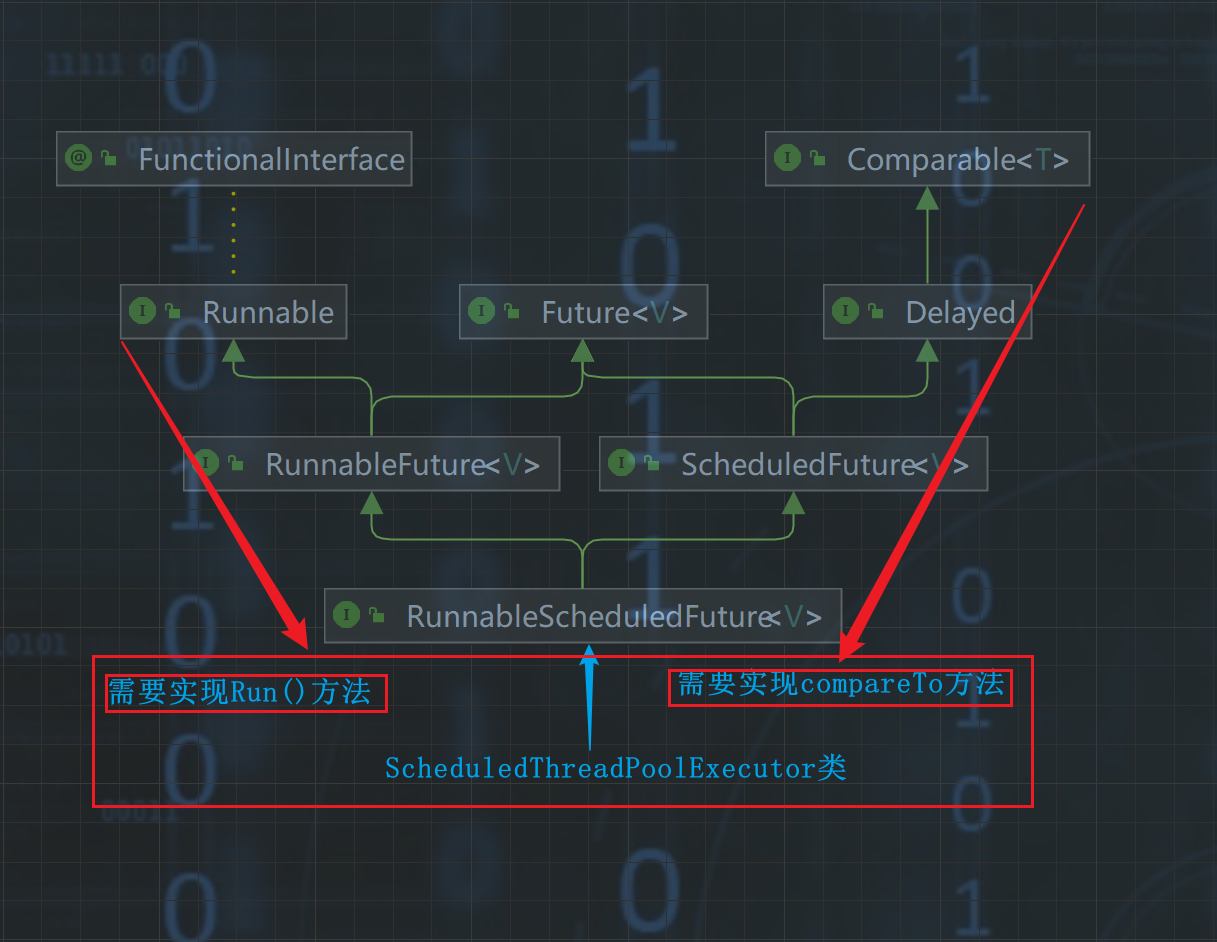
- 由上图可知,ScheduledThreadPoolExecutor要实现getDelay和compareTo方法,所以我们看一下相关源码
//返回距离下次任务执行时间的间隔
public long getDelay(TimeUnit unit) {//计算距下次执行时间与当前系统时间的差值return unit.convert(time - now(), NANOSECONDS);
}
//比较任务之间的优先级,如果距离下次执行的时间间隔较短,则表示优先级较高
public int compareTo(Delayed other) {if (other == this) //同一个对象返回0return 0;//如果是ScheduledFutureTask类型,则强制转化后为变量time的差值if (other instanceof ScheduledFutureTask) {ScheduledFutureTask x = (ScheduledFutureTask)other;long diff = time - x.time;if (diff < 0)return -1;else if (diff > 0)return 1;else if (sequenceNumber < x.sequenceNumber)return -1;elsereturn 1;}//如果不是ScheduledFutureTask类型,则比较getDelay的返回值long diff = getDelay(NANOSECONDS) - other.getDelay(NANOSECONDS);return (diff < 0) ? -1 : (diff > 0) ? 1 : 0;
}
//覆盖FutureTask的run()方法
public void run() {//判断是否为周期性任务boolean periodic = isPeriodic();//根据当前任务运行状态判断是否删除if (!canRunInCurrentRunState(periodic))cancel(false);//如果是周期性任务,则调用父类的run方法else if (!periodic)ScheduledFutureTask.super.run();//如果任务执行结束,则重置以备下次执行else if (ScheduledFutureTask.super.runAndReset()) {setNextRunTime();reExecutePeriodic(outerTask);}
}
//重新执行周期性任务
void reExecutePeriodic(RunnableScheduledFuture task) {if (canRunInCurrentRunState(true)) {super.getQueue().add(task);if (!canRunInCurrentRunState(true) && remove(task))task.cancel(false);elseensurePrestart();}
}
- 由于作者能力有限,有关ScheduledThreadPoolExecutor类包含的四个方法的实现逻辑
schedule方法源码就不再进行详说。
2.6 案例
/*** @author 缘友一世* date 2023/3/7-13:39*/public class MyTriggerTask2 {public static void main(String[] args) {ScheduledExecutorService executorService = Executors.newSingleThreadScheduledExecutor();//立即执行,任务执行结束后每隔1秒执行一次,真正的执行时间是任务执行时间+间隔时间executorService.scheduleWithFixedDelay(()->{System.out.println("["+LocalDateTime.now()+"] 任务执行中...");},0,1, TimeUnit.SECONDS);System.out.println("任务开始执行!");}}

2.7 总结
- 相较于Timer实现方式,ScheduledExecutorService实现方法弥补了Timer的几个缺陷:
- 通过多线程调用,单个任务抛出异常不会对其他任务产生影响
- 由于是多线程执行,某个任务执行过长不影响其他任务的执行时间
- 基于相对时间,不因系统时间的变化而受到影响

- Leader-Follower模式
- 假如说现在有一堆等待执行的任务(一般是存放在一个队列中排好序),而所有的工作线程中只会有一个是leader线程,其他的线程都是follower线程。只有leader线程能执行任务,而剩下的follower线程则不会执行任务,它们会处在休眠中的状态。当leader线程拿到任务、执行任务前,自己会变成follower线程,同时会选出一个新的leader线程,然后才去执行任务。如果此时有下一个任务,就是这个新的leader线程来执行了,并以此往复这个过程。
- 当之前那个执行任务的线程执行完毕再回来时,会判断如果此时已经没任务了,又或者有任务,但是有其他的线程作为leader线程,那么自己就休眠了;如果此时有任务但是没有leader线程,那么自己就会重新成为leader线程来执行任务。
- 避免没必要的唤醒和阻塞的操作,这样会更加有效,且节省资源
相关内容
热门资讯
保存时出现了1个错误,导致这篇...
当保存文章时出现错误时,可以通过以下步骤解决问题:查看错误信息:查看错误提示信息可以帮助我们了解具体...
汇川伺服电机位置控制模式参数配...
1. 基本控制参数设置 1)设置位置控制模式 2)绝对值位置线性模...
不能访问光猫的的管理页面
光猫是现代家庭宽带网络的重要组成部分,它可以提供高速稳定的网络连接。但是,有时候我们会遇到不能访问光...
表格中数据未显示
当表格中的数据未显示时,可能是由于以下几个原因导致的:HTML代码问题:检查表格的HTML代码是否正...
本地主机上的图像未显示
问题描述:在本地主机上显示图像时,图像未能正常显示。解决方法:以下是一些可能的解决方法,具体取决于问...
不一致的条件格式
要解决不一致的条件格式问题,可以按照以下步骤进行:确定条件格式的规则:首先,需要明确条件格式的规则是...
表格列调整大小出现问题
问题描述:表格列调整大小出现问题,无法正常调整列宽。解决方法:检查表格的布局方式是否正确。确保表格使...
Android|无法访问或保存...
这个问题可能是由于权限设置不正确导致的。您需要在应用程序清单文件中添加以下代码来请求适当的权限:此外...
【NI Multisim 14...
目录 序言 一、工具栏 🍊1.“标准”工具栏 🍊 2.视图工具...
银河麒麟V10SP1高级服务器...
银河麒麟高级服务器操作系统简介: 银河麒麟高级服务器操作系统V10是针对企业级关键业务...